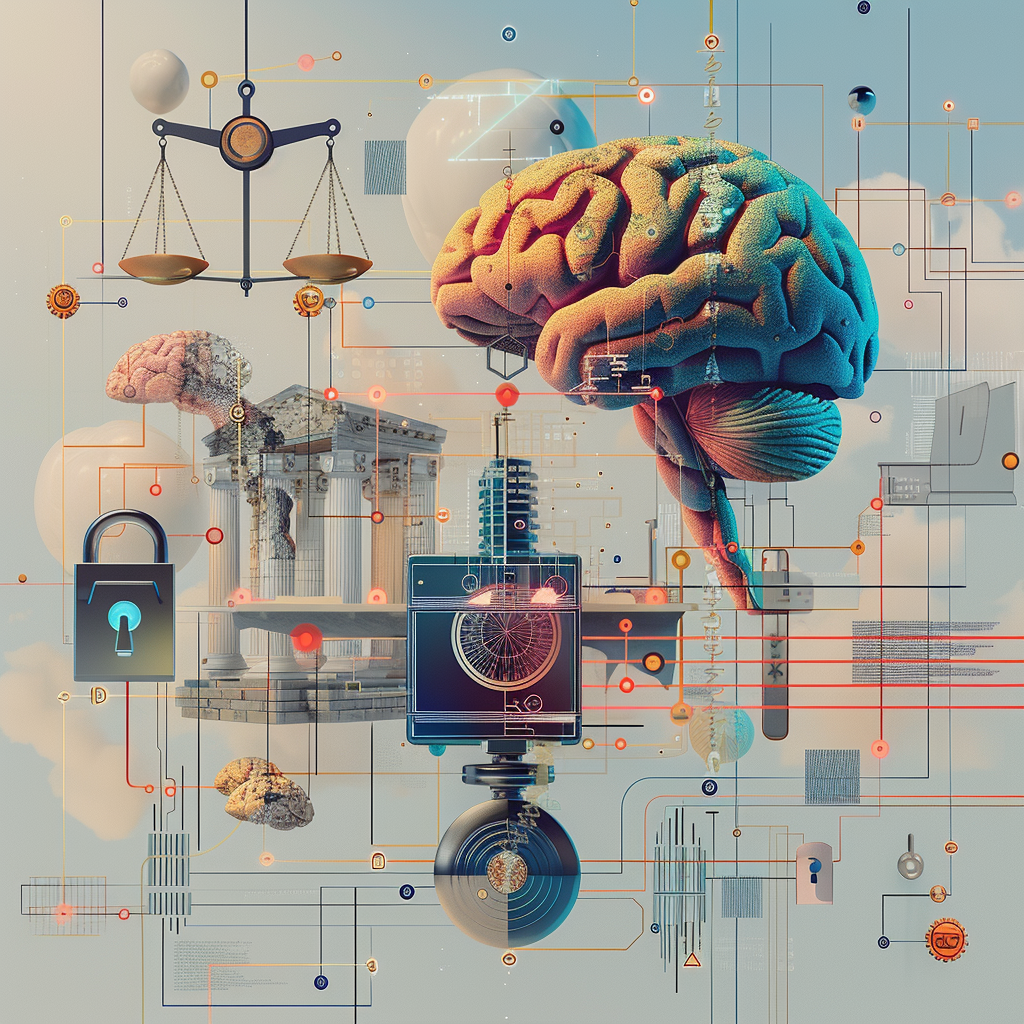

AI might feel like it has come from nowhere, but the biggest developments in the last two years have been years in the making. As AI becomes more commonplace in day-to-day life, even in professions where it can feel superfluous, attention has been drawn to its positives and negatives. For all of the benefits AI can provide, such as idea generation, automation, and efficiency, risks exist around trust and security.
As such, AI Trust, Risk, And Security Management (TRiSM) strategies have been developed.
How can TRiSM strategies be implemented to ensure AI systems are designed with these policies?
How can we ensure that AI is secure and reliable but also capable of meeting human-set ethical standards?
For any business intending to implement AI into their business, ensuring any AI being used follows agreed TRiSM strategies is vital. When implemented into AI development from the start, TRiSM allows for AI that is effective but also safe to use.
In the development of any AI solutions, it is vital that TRiSM is applied vigorously. These practices ensure that an AI system is designed in a way that makes it trustworthy and free from the risks often associated with using AI. Not only can this ensure that AI is used ethically, but also that the risk and potential for security vulnerabilities are reduced significantly. Today, the core foundations of TRiSM include:
These are considered the ‘pillars’ of TRiSM, and ensuring all AI is developed to the above standards should become a priority.
Put simply, people are not yet fully ready to trust AI. While much of this is a build-up of assumptions based on works of fiction, there are justifiable reasons to be concerned about AI. Given that over one-third of AI systems show at least some form of bias that impacts their decision-making, public concerns around the ethical strength of AI further highlight the importance of making TRiSM a foundation of development.
Indeed, a 2022 report from Deloitte found that 3 out of 4 executives in major global markets intend to gain the trust of their consumers by creating trustworthy AI tools. However, with around 58% of adults in the United States concerned about AI and robotics lacking human ethics, there is work to be done to convince that same consumer public.
Given that studies by the MIT Sloan Management Review found that 1 in 4 AI projects fall apart due to a failure to implement risk management frameworks early on, these public fears can feel justified. Indeed, the Bank for International Settlements found that some $217m had been lost in 2020 thanks to AI and machine-learning risks and mistakes.
Also, individuals do not need to look too far to find negative stories about AI being used negatively. Indeed, in 2023, there has been a 50% increase in AI-powered cyberattacks. By 2025, it is expected that around $10 billion will be spent on AI security systems, jumping from $4 billion in 2021. This shows a natural concern within the industry that AI is not as safe as it should be.
The challenge in ensuring TRiSM is implemented properly is that it is included from the start. This means incorporating TRiSM into already-built AI systems can be challenging. When every stage of the conceptualization and development of the AI platform takes TRiSM into account, though, it is much easier to use effectively.
The first step to implementing TRiSM is ensuring that AI developments are designed with ethics in mind. This means that the developers must first understand the importance of ethics within the context of AI. When ethics are a primary consideration during the design and development phase, ensuring that an AI tool can be used for the right purposes is much easier.
This also helps to guarantee that the AI provides unbiased outcomes, reducing the risk of inherent bias and unethical thinking being ‘baked in’ to the AI system's output. It is also vital that any AI system developed can be transparent in how it comes to its outcomes and conclusions. Any AI should be able to show it working and let the user know the steps taken to reach the conclusion that is arrived at. This helps the user to understand that the AI has followed a strict, ethical process instead of providing pre-determined answers to fit a specific agenda.
The same goes for risk management within TRiSM. A thorough risk assessment should be conducted to determine what challenges might exist for an AI project. What challenges might make the AI unsafe or potentially compromise its fairness?
Once the risks are identified, developers must implement strategies that would remove or mitigate the risk. This would allow for the AI system to be used within an acceptable threshold of what would be determined as a risk. While all risks are unlikely to be removed, designing AI with risk management in mind will improve and reduce the level of risk in usage.
With some 60% of AI risks being focused on data privacy, it is natural that users and implementors are concerned. TRiSM helps overcome these risks from the first design and development phase.
Security measures should be designed into the AI project from the offset. AI systems that are found to have vulnerabilities and holes in their security can be hard to correct if developed with the issues present. By designing the AI project from the start with an intention to avoid this, the risk of such security breaches being found later down the line is decreased exponentially.
However, regular monitoring should be employed during every development and deployment phase. This helps to spot potential security flaws that might have slipped the net, finding them before they can be exploited. One reason security measures are needed is due to the prevalence of data poisoning, the act of contaminating data to make an AI system produce unsatisfactory or biased results.
Around 1 in 5 AI security problems come from data poisoning. Ensuring that data poisoning can be mitigated and overcome is a vital part of TRiSM, reducing the risk of an AI being trained on incorrect data and thus producing pre-determined or damaging results.
Any industry that can utilize AI will benefit from TRiSM becoming commonplace. However, two sectors where we can see the greatest impact are:
The healthcare sector needs AI tools that can provide accurate diagnoses without compromising the individual's or their data's health. TRiSM in healthcare AI improves diagnostic assistance, provides transparency in how that diagnosis was reached, and gives patients extra peace of mind, knowing that their data is kept secure, thus improving treatment and diagnosis without breaching ethical standards.
The finance sector will also benefit from TRiSM, as AI is already a hugely useful tool within the finance industry. This helps to reduce things like counting errors and improves accuracy in fraud detection. On top of that, TRiSM will ensure that finance-focused AI tools are transparent in their decision-making while ensuring that all suggestions and actions meet industry regulations.
While the idea of TRiSM is fine, its implementation is easier said than done. It provides us with an easy way to cap AI's dangers whilst benefiting from efficiency, accuracy, and performance improvements.
However, implementing TRiSM into AI is difficult for both developers and organizations. For one, there is the age-old resistance to change. Things were fine the way they were, so why change?
Companies often just see the financial benefits of implementing AI and want it in place, regardless of potential consequences. Therefore, stakeholders must be a key part of the TRiSM implementation process. By highlighting the benefits of reducing AI risks, stakeholders can come around to the benefits of implementation without taking so many risks in the future.
This can be done through continuous negotiation and explanation and comprehensive training. The more key stakeholders understand the benefits of TRiSM, the less likely they are to see it as intrusive or limiting. Thus, its implementation and uptake are more likely to become an industry standard.
However, as AI continues to develop and improve, TRiSM has to stay ahead of the curve. New complications that could impact TRiSM standards emerge with every new AI development. As such, there has to be a company-wide embrace of continuous learning and improvement. This helps ensure that AI can continue to be beneficial whilst staying ahead of potential security threats and emerging exploits.
Coincidentally, one of the most effective ways to implement TRiSM into AI will be by using AI. AI can provide the most comprehensive data crunching for risk assessments and security analysis. Therefore, using an AI trained on TRiSM for risk assessment can make it easier to assess future AI systems for their suitability.
TRiSM is going to be a vital part of all future AI developments. As AI continues to evolve into the mainstream, global standards will be developed to mitigate risk and ensure that trust, risk, and security management become industry-wide.
In the future, we expect AI regulations to be adopted globally, ensuring that the industry follows the high standards set in other global industries.
Many of the biggest worries about AI come from the perception of risk. We have all seen the various science fiction tropes of where AI can go if left unchecked. However, by making TRiSM a standard for all AI development, developers and companies using AI can reap the rewards of AI without having so many concerns about security risks and vulnerabilities.
As each day passes, AI becomes more important in our personal and professional lives. To ensure that AI is accepted within wider society, TRiSM is vital for creating a future where AI is not feared. By ensuring that the risks are understood from the start, instead of simply looking at the potential benefits, we can make AI as safety-conscious as other industries that have created the world better.
AI comes with many risks and concerns – arguably as many problems as it provides beneficial opportunities. By ensuring that TRiSM becomes a standard across the industry, we can create a future where AI is utilized without fear of breaking ethical boundaries or producing opaque results that cannot be understood. This, in turn, makes AI a much more useful tool for everyone.
